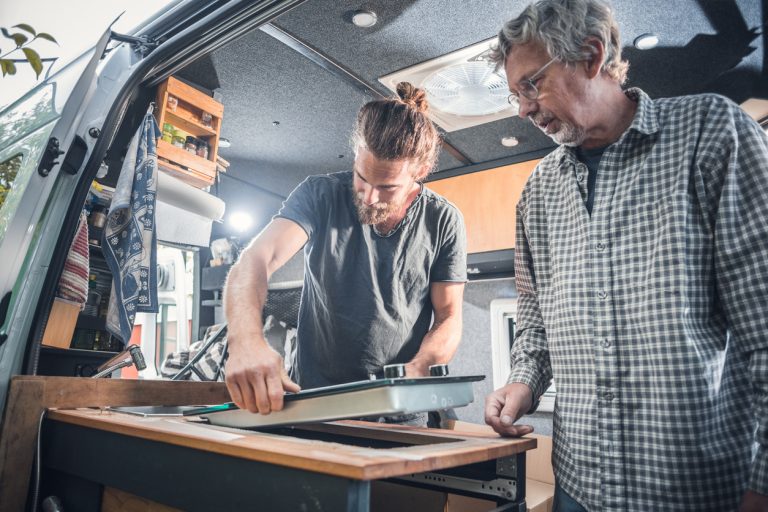Living on the road is a growing trend. For the best experience, you should have a rig that fits your needs.
There are plenty of pre-built RVs and vans on the market, but many people elect to do their own build-outs. If you’re planning a build-out, make sure you think through the whole process before you start.
Below are several considerations to get you started.
Set Budget
When planning a vanlife build, set a budget before making any purchases. Outfitting a van can get very expensive if you aren’t attentive to your spending. Making a budget in advance will help you decide what type of van to purchase, how much you need to DIY, and how elaborate you can get with the interior. You can also break down pricing for what needs to be done before you can begin traveling and what can be budgeted for overtime.
Determine Needs
You should make a list of your must-haves. This list will vary by person, where you plan to travel, how long you’ll be on the road, and how self-contained you want to be. You will only have approximately 100 to 150 square feet of space. A big debate tends to be storage versus amenities.
Storage
Think about how many people and pets will be traveling with you. You should plan everything you need to take. That includes clothing, food, water, cookware, and outdoor gear. Now, consider how much space you will need to store it all. It’s vital that everything has a place. You do not want your van to be cluttered or have items shifting while you drive.
Amenities
Unfortunately, the more storage space you need, the less room you have for amenities. Decide whether you need a large bed, flushing toilet, full kitchen, and shower. Some people get creative with amenities by using outdoor showers, drop-down outdoor cooktops, campground facilities, or showering at gyms.
Containment
The more amenities you can include, the more self-contained you will be. Being self-contained can save you a lot of money in the future because you won’t always need to be at an established campsite. As long as you have a bathroom, kitchen, and power supply, you can find affordable or even free places to stay. Good options for those that are self-contained are BLM areas or Harvest Hosts.
Select Van
You are going to put a lot of time and money into your build. Make sure you get it right by starting with the best base. There’s a lot to consider when selecting the type of van you want.
Age
No matter what age of van you select, there are pros and cons. Newer vans will have a heavier price tag, but you’re likely to go further before you need maintenance. That can be especially nice if you’ve spent all your spare funds on your build. On the other hand, classic vans are more affordable upfront and come with personality. If you go with an older model, be sure to add a repair fund to your budget.
Height
Vans come in a variety of interior heights. Most people that will be living in their campervan want something that they can stand up in. You may plan to spend a lot of time outdoors, but the weather won’t always allow that. Your back will thank you for the ability to stand up straight while stuck inside. However, if you are on a tight budget, a standard-height van will be more affordable.
Repairs
You should research information on repairs before purchasing a van. Some makes and models are difficult to find parts for and have more expensive parts. It’s also worth checking what mechanics are willing to work on your rig. Some vans must go to dealerships or specialty shops to be serviced.
Fuel Economy
No campervan is going to be remarkably fuel-efficient, but some are better than others. Note that better fuel economy often means less power. Weigh your options while factoring in how many miles you plan to drive and what type of terrain you will cover. You may be willing to give up a few miles per gallon if you plan to spend a lot of time driving in the mountains.
Plan Layout
You should plan your layout carefully before starting your build. Poor planning can result in wasted materials, overspending, or a design you don’t like. Three simple steps will help you get it right.
View
One of the best ways to start your planning is to view what others have done. Looking at pictures online is great, but it is even better to see campervans in person. Consider touring a few and picking the brains of those who live in their vans.
Measure
Measure carefully when you are designing your layout. You need to account for the space taken up by insulation and interior walls. Make sure you also leave a comfortable walkway between your cabinetry, but you don’t want to waste any space.
Sketch
It is a good idea to sketch out your design. You can write all the measures on your drawing to help prevent errors. Draw everything, wait a few days, then look again. Make sure you are 100% happy with how things fit together.
Building out your van is an adventure in itself. Budgeting, determining your needs, selecting a van, and planning the layout are the first steps to life on the road.

